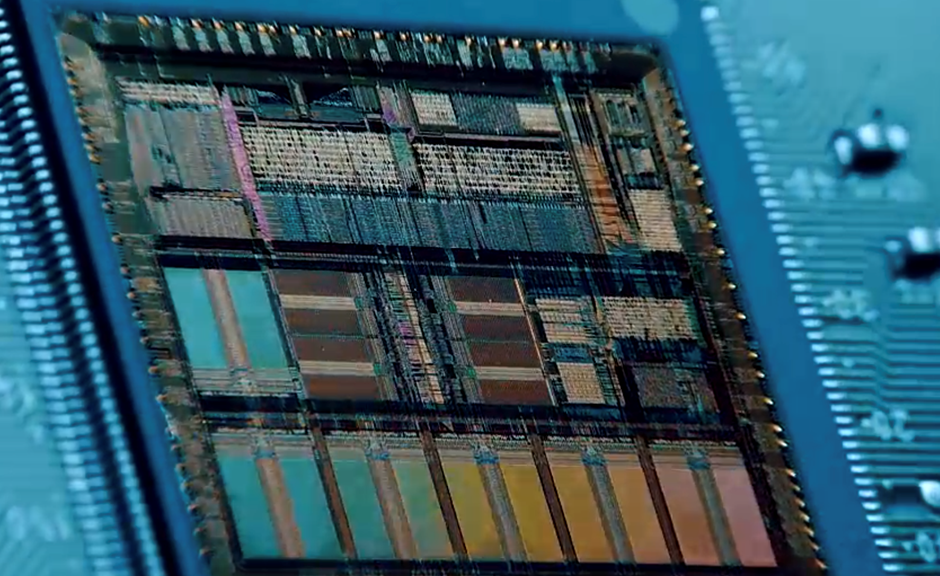Imagination aims to be the GPU of choice for RISC-V SoCs, a strategy reinforced by limited competition. At the RISC-V Summit Europe, Eswin Computing unveiled its EIC77 series SoCs, featuring Imagination’s GPU, SiFive’s CPU, and Eswin’s NPU. The EIC7700X model includes a quad-core SiFive Performance P550, an IMG A-Series GPU, and an NPU for high-performance AI and video processing. This integration targets edge computing and AI applications, maximizing SoC performance through tight integration of domain-specific accelerators.

What do we think? Imagination has long professed a strategy to be the GPU of choice for RISC-V SoCs. While there are low-end choices and an upcoming GPU based on the RISC-V architecture from Codasip, Imagination has a lock on that strategy, as much as anything, because there is no comparable choice.
Eswin Computing EIC77 series SoCs
At the RISC-V Summit Europe in Munich (June 24–28), Beijing-based Eswin Computing Technology Co. launched its EIC77 series SoCs featuring GPU IP from Imagination, CPU IP from SiFive, and an NPU developed by Eswin Computing. A first part in the family, the EIC7700X, was shown at the event.
The EIC77 series includes the EIC7700, EIC7700X, EIC7702, and EIC7702X, which target edge computing and AI applications. However, specifications were only released for the 7700X.
The EIC7700X, part of the series, boasts a quad-core SiFive Performance P550 core complex, IMG A-Series GPU, and an independently developed NPU offering high performance for DNN inference and video processing.
SiFive’s Performance P550 application processor features a 13-stage, triple-issue, out-of-order pipeline and can deliver up to 30% higher performance in less than half the area of a comparable Arm Cortex-A75, SiFive claims.
While Imagination’s A-Series GPU, which debuted in December 2019, might seem like an older model, there’s logic in Eswin choosing to use it since it’s Imagination’s smallest-area GPU designs of the alphabet series era. The press release mentions that the GPU is 128 bits wide, meaning it must be Imagination’s IMG AXT variant, the higher-performance A-Series core based on the Volcanic architecture.
Imagination says the IMG AXT can deliver up to 32 GPixel/s and 1 TFLOPS performance using bandwidth-optimizing configurable caches and performance-boosting ultra-wide arithmetic logic units. The Eswin spec says it delivers 1 TOPS and 8 GPixels performance, leading us to conclude it is the IMG AXT 8-256 variant.
“Tight integration with domain-specific accelerators, such as a GPU and NPU, is key to maximizing SoC performance,” said Jack Kang, SiFive’s senior vice president of worldwide business development, sales, and customer experience (CX).
Key features of the EIC7700X include:
- A quad-core SiFive Performance P550 core complex running at 1.4 GHz-plus (up to 1.8 GHz) with a 13-stage, triple-issue, out-of-order pipeline based on the RISC-V RV64GBC ISA.
- A high-efficiency IMG A-Series GPU that provides the optimum balance of fill rate and compute in a compact silicon area. Its 128-bit-wide superscalar ALU with dedicated AI pipelines can deliver up to 0.25 TFLOPS, 1 TOPS, and 8 Gpixels performance.
- An independently developed NPU accelerator from Eswin Computing that provides up to19.95 int8 TOPS, 9.975 int16 TOPS, and 9.975 FTPS FP16 compute performance.
Eswin says there is high utilization of the computing units for DNN inference, delivering up to 590 FPS ResNet50, up to 2600 FPS MobileNetv2, and up to 8K at 25 FPS video encoding and 8K at 50 FPS video decoding.
Bo Wang, vice chairman of Eswin Computing, said: “We designed the EIC77-series SoCs to meet the diverse computational requirements of various application scenarios. By combining powerful RISC-V processors from SiFive with a compute-focused GPU from Imagination and our independently developed high-performance NPU, Eswin Computing have developed a series of outstanding products in the fields of edge computing, AI PC, AI acceleration, and other fields.”
This is the first design for SiFive’s CPU matched with a GPU. Other firms, such as X-Silicon and Think Silicon, have also announced RISC-V SoCs with integrated GPUs.